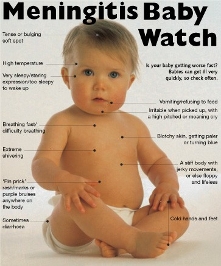Viral Meningitis In Children

What is viral meningitis?
Viral Meningitis In Children Care Guide
Viral meningitis is inflammation of the lining that surrounds and protects your child's brain and spinal cord. The inflammation is caused by a viral infection and can be life-threatening. Viral meningitis is also called aseptic meningitis.
What causes viral meningitis?
Viral meningitis is caused by viruses found in sputum (spit), blood, nose drainage, and bowel movements. The virus is spread from an infected person to another by coughing, kissing, or sharing food or drinks. Your child may also get a type of viral meningitis if he is bitten by a mosquito that carries the West Nile virus. Ask caregivers for more information about how to prevent West Nile virus.
What are the signs and symptoms of viral meningitis?
It may only take a few hours to a few days to have any of the following signs and symptoms:
- High fever and chills
- Stiff neck or neck pain
- Severe headache
- Nausea or vomiting
- Red or purple rash
- Eye pain when your child looks into bright lights
- Sleepiness or confusion
Common symptoms in babies and children:
• Fever
• Irritability
• Poor eating
• Hard to awaken
How is viral meningitis diagnosed?
- Blood tests: Your child may need blood tests to give caregivers information about how his body is working. The blood may be taken from your child's arm, hand, finger, foot, heel, or IV.
- CT scan: This test is also called a CAT scan. An x-ray and computer are used to take pictures of your child's body. Your child may be given dye, also called contrast, before the test. Tell the caregiver if your child is allergic to dye, iodine, or seafood.
- Lumbar puncture: This procedure may also be called a spinal tap. A small needle is placed into your child's lower back. Fluid will be removed from around your child's spinal cord and sent to the lab for tests. The test is done to check for bleeding around your child's brain and spinal cord, and for infection. This procedure may also be done to take pressure off your child's brain and spinal cord, or to give medicine. Your child may need to be held in place so that he does not move during the procedure.
- MRI: An MRI uses a powerful magnet and radio waves to take pictures of the inside of your child's body. Caregivers may use the MRI to look at your child's brain, muscles, joints, bones, or blood vessels. Your child will need to lie still during his test. Never enter the MRI room with any metal objects. This can cause serious injury.
- Throat and bowel movement cultures: A swab of your child's throat or a bowel movement sample may be collected to learn what virus is causing his symptoms.
How is viral meningitis treated?
- Ibuprofen or acetaminophen: These medicines are given to decrease your child's pain and fever. They can be bought without a doctor's order. Ask how much medicine is safe to give your child, and how often to give it.
- Anticonvulsant medicine: Anticonvulsants are given to control your child's seizures.
- Rest: Your child should rest as much as possible. Have your child rest in a dark, quiet room if he has headaches.
What medical problems can viral meningitis cause?
- Seizure
- Hearing loss
- Blindness
- Heart, kidney, or adrenal gland diseases
- Coma
How can viral meningitis be prevented?
- Clean surfaces with soap and water. Disinfect them with a solution that has water and chlorine bleach.
- Completely heat chilled foods before you serve them to your child.
- Make sure your child discards tissue after he wipes or blows his nose.
- Have your child wash his hands often with soap and water.
- Do not let your child share food or drinks.
- Certain illnesses caused by a virus, such as the mumps, can lead to viral meningitis. You can help prevent viral meningitis when you also prevent these illnesses. Have your child get the following vaccines:
- Influenza vaccine: This vaccine helps prevent influenza (flu). Everyone older than age 6 months should get a yearly influenza vaccine. Get the vaccine as soon as it is available, usually in October or November each year.
- MMR vaccine: This vaccine helps prevent measles, mumps, and rubella. Children 1 year of age and older get 2 doses. These are usually given between ages 15 and 18 months and again between ages 4 and 6 years.
- Varicella vaccine: This vaccine helps prevent infection with varicella (chickenpox). Children usually get 2 chickenpox vaccinations. The first dose usually is given between 12 and 15 months of age. The second dose usually is given between 4 and 6 years of age. Any older child or adult who is not fully vaccinated or who has never had chickenpox should receive the vaccine
- Polio vaccine: This vaccine is also called inactivated polio vaccine or IPV. It helps prevent a disease called polio. Infants and children usually get 4 doses of IPV. The vaccine is usually given at ages 2 months, 4 months, between 6 and 18 months, and between 4 and 6 years of age. The vaccine may be given as early as 6 weeks of age.







